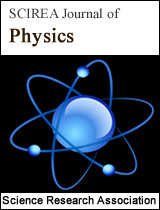Innovative Cooling System for a High-Flux Pool-Type Research Reactor
DOI: 10.54647/physics140639 39 Downloads 11706 Views
Author(s)
Abstract
The present paper introduces the conceptual design of a pool-type research reactor facility with a three-circuit cooling system. The advantages of creating a comprehensive cooling system for the research reactor, based on a combination of forced and natural coolant circulation, are substantiated. The use of "dry" cooling towers for transferring heat from the reactor to the ultimate sink (atmospheric air) eliminates the problem of salt deposits formation in the equipment and significantly reduces operational costs for chemical and mechanical cleaning of heat exchangers. The presence of an intermediate circuit, operating on the principle of a heat pipe (thermosiphon), helps to eliminate the risk of radioactive coolant leakage into the environment. The operation of this circuit ensures high heat transfer efficiency while maintaining a simple design and absence of moving mechanical parts, which ensures the reliability of the system. The utilization of an upward flow for heat removal from the core creates optimal conditions for enhancing thermal reliability in the pool-type reactor, considering the displacement of the maximum neutron flux density to the lower part of the core due to the position of control rod drives and improved heat removal conditions in this area due to increased pressure and minimum coolant temperature. The design of the pool-type reactor facility and numerical assessments of the cooling circuits' performance at a power of 25 MW, providing a neutron flux exceeding 1×1015 cm-2s-1, are presented.
Keywords
Research reactors, passive system, reactor cooling system, heat pipe, thermal reliability, nuclear reactor safety, natural convection
Cite this paper
Vitaly Uzikov,
Innovative Cooling System for a High-Flux Pool-Type Research Reactor
, SCIREA Journal of Physics.
Volume 9, Issue 5, October 2024 | PP. 145-180.
10.54647/physics140639
References
| [ 1 ] | "Innovative Nuclear Reactor Systems and Fuel Cycles" by D.G. Cacuci. |
| [ 2 ] | "Research Reactor Design" by John R. Lamarsh. |
| [ 3 ] | R. P. Kuatbekov, V. A. Lukichev, S. V. Osipovich, S. A. Sokolov, and I. T. Tretyakov, "Trushkin/research reactor for nuclear research centers, XIII Russian meeting "safety of research nuclear installations"," 2011, https://refdb.ru/download/ 1318279.html. |
| [ 4 ] | "Heat Pipe Technology" by D.A. Reay and P.A. Kew. |
| [ 5 ] | "Dry Cooling Towers and Heat Pipes for Power Plants" by H.H. Al-Kayiem. |
| [ 6 ] | "Principles of Nuclear Reactor Engineering" by Samuel Glasstone and Alexander Sesonske. |
| [ 7 ] | State Atomic Energy Corporation "Rosatom". NP-009-17: Rules for Ensuring the Safety of Research Nuclear Installations. Moscow, 2017. |
| [ 8 ] | V. Uzikov, I. Suleimanov, and I. Uzikova, "The Concept of the Heat Removal System of a High-Flux Research Reactor",Science and Technology of Nuclear Installations, Volume 2022. https://doi.org/10.1155/2022/1815342. 2022 |
| [ 9 ] | V. Uzikov and I. Uzikova, "Universal system of passive heat removal from the core of a research reactor," Nuclear Technology & Radiation Protection, vol. XXXV, no. 2, 2019. |
| [ 10 ] | V. Uzikov and I. Uzikova, "Assystem E&OS. power-independent cooling system for a high-power research reactor," 2021, https://www.researchgate.net/publication/352684970_Power-independent_cooling_system_for_a_higli-power_research_reactor. |
| [ 11 ] | "Scaling and Corrosion in Wet Cooling Towers" by B.S. Hasted. |
| [ 12 ] | "Corrosion and Deposits in Power Plants" by Charles W. Tobias. |
| [ 13 ] | International Atomic Energy Agency. "Research Reactors". IAEA Research Reactor Database. Available at: https://nucleus.iaea.org/RRDB/RR/ReactorSearch.aspx (accessed June 4, 2024). |
| [ 14 ] | "Thermal-Hydraulics of Water Cooled Nuclear Reactors" by Francesco D'Auria. |
| [ 15 ] | "Nuclear Safety: Principles and Practices" by V. G. Asmolov |
| [ 16 ] | "Passive Safety Systems and Natural Circulation in Water Cooled Nuclear Power Plants" by IAEA. |
| [ 17 ] | "Nuclear Reactor Thermal-Hydraulics" by Robert E. Masterson. |
| [ 18 ] | MCU-RFFI/A program with DLC/MCU DAT-1.0 Constants Library, Certification Passport of the Software Tool No. 400,2016. |
| [ 19 ] | F. M. Arinkin and A. A. Shaimerdenov, "Core Conversion of VVR-K Research Reactors" Atomic Energy, vol. 123, no. 1, pp. 17-24, 2017. |
| [ 20 ] | A. Alyamovsky, SolidWorks Simulation. How to Solve Practical Problems, BHV, Saint Petersburg, Russia, 2012. |

